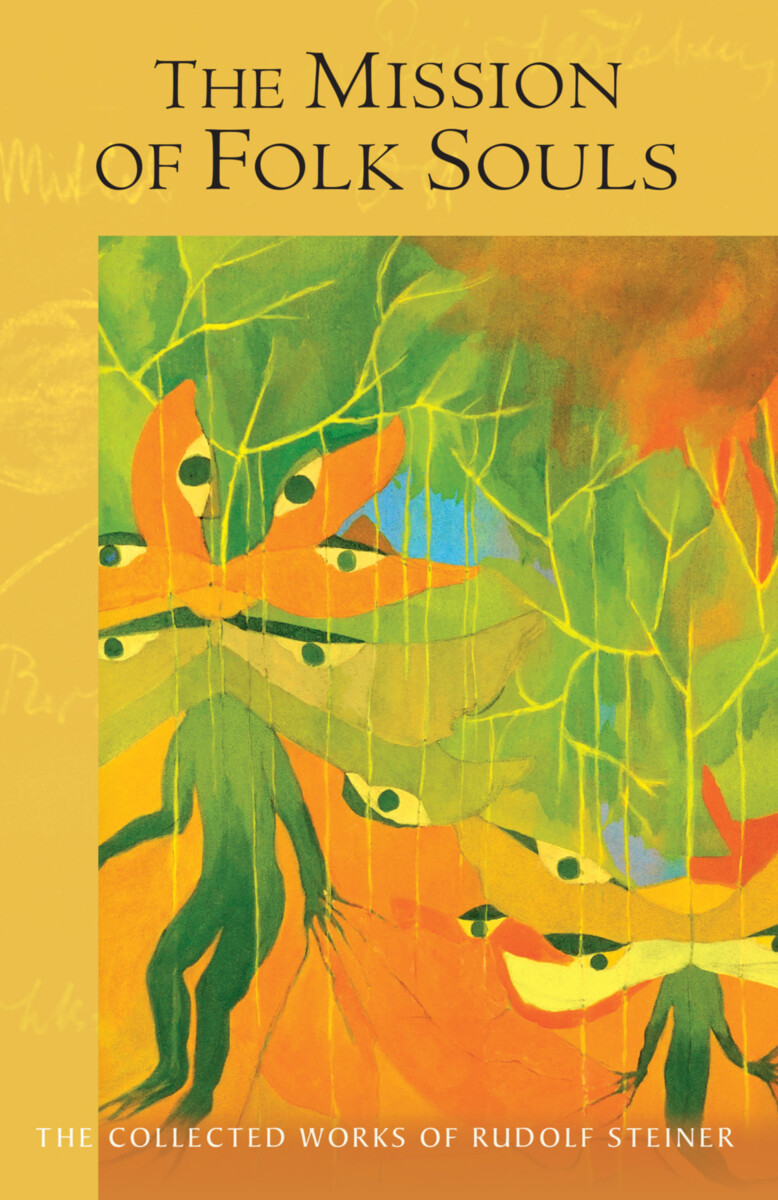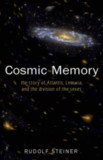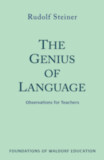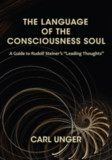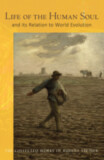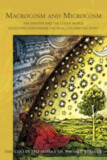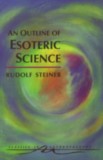The Mission of Folk Souls
(CW 121)
- Publisher
SteinerBooks - Published
15th November 2022 - ISBN 9781621482680
- Language English
- Pages 264 pp.
- Size 6" x 9.25"
11 lectures, Oslo, June 7–17, 1910 (CW 121)
“It is particularly important...especially at the present time, to speak about the mission of the individual folk souls...because the destiny of humanity in the near future will bring people together in far greater measure than has hitherto been the case in order to fulfil a mission common to the whole of humanity. But the members of the individual peoples will only be able to offer their proper, free, and positive contributions if they have, above all else, an understanding of their own native origin, an understanding of what we might call the self-knowledge of their people, their folk.”— Rudolf Steiner
In the mythologies of all ancient cultures, humanity is portrayed as intimately interwoven with the activity of lesser and greater gods, spirits, devas, and elemental beings—as members of the grand symphony of creation. Who are these gods, pictured so vividly in various myths and legends? And how are they connected with the mission of humanity as a whole and the diverse peoples of the Earth?
In his preface to this lecture course, Steiner argues that a true basis for a “psychology of peoples” cannot be given by the “anthropological, ethnographical, or even historical studies” of conventional science, but requires “a basis...in spiritual reality.” It is precisely this spiritual reality—the creative activity of the beings of the hierarchies in connection with the destiny of humanity—that forms the heart of these lectures and of Steiner’s view of folk psychology more broadly.
These lectures form Rudolf Steiner’s most comprehensive and profound account of the mission of folk souls.
The Mission of Folk Souls is a translation of Die Mission einzelner Volksseelen im Zusammenhange mit der germanisch-nordischen Mythologie (6th rev, ed.), Rudolf Steiner Verlag, Basel, 2017 (GA 121). Cover image: Old Sun. The Awakening of the Archangels, by Zvi Szir.
C O N T E N T S:
Foreword by the editors
Introduction by the editors
Preface (1918) by Rudolf Steiner
Lecture One: June 7, 1910
On the necessity of a higher degree of impartiality regarding the contents of spiritual folk knowledge. Homelessness as a stage of occult development and the knowledge and self-knowledge of folk. On the idea of folk spirits, starting from the human being’s higher members and their development in former states of the Earth (old Moon, old Sun, and old Saturn stages). Higher entities at the level of humanity during earlier embodiments of the Earth (spirits of personality, archangels, angels). Archangels (archangeloi) working in the sphere of the earth as folk spirits, in alternation the working of spirits of personality (archai) as time spirits and their cyclic characteristics, angels (angeloi) as mediators between folk spirits and individual human beings. The human being as an individual and as a member of the hierarchies.
Lecture Two: June 8, 1910
Diversity in the etheric aura throughout the regions of the earth and its connection with folk spirits. Etheric influence of the folk spirits on the human temperaments. Spiritual entities remaining behind in evolution. Human languages as the result of the interaction of normally evolved archangels and spirits of form remaining at the archangelic level. Working of the time-spirits in the outer physical world (e.g., in inventions). How spirits of form remaining at the level of spirits of personality work in the inner configuration of the thinking of an age. The exceptional harmony in the interaction of the folk spirit, the spirit of thought, and the spirit of language determined the historical position of the ancient Indian people, the Sanskrit language, and Indian philosophy. Difficulty of the concept of a folk arising from the interaction of normal and abnormal archangels, the abnormal and normal spirit of the time. The peculiarity of multilingual Switzerland; the character of the North American folk.
Lecture Three: June 9, 1910
Soul forces of the human being, the higher inner life of the folk spirits, and their experiences of the human “I.” Ascending and descending periods of folk life as the incarnation of archangels. Angels as mediators between folk spirits and individuals. The position of the human being as a member of a folk. Interaction of archangels with angels, abnormal archangels, abnormal and normal spirits of personality. The centuries-long splintering of the German nation into smaller folk groups as an example of the interaction of archangels and abnormal spirits of personality. Splintering of Holland from the German nation, splintering of the Portuguese nation from the Spanish nation as examples of the encroachment of the spirit of the age into the work of an archangel. Interaction of normal and abnormal spirits of form as the basis of a unified humanity and racial formations. Difference between the concept of race and folk.
Lecture Four: June 10, 1910
The human being and his four bodies as the result of the manifold activity of spiritual entities. Spirits of form (exusiai) as bestowers of the I-organization. Normal and abnormal spirits of form in relation to the first, middle, and last third of human life. Uniformity and differentiation of humanity into races by dependence on the abnormal spirits of form, location on earth, and heredity. Limited validity of the concept of races because they only came into being in a certain Earth epoch (Lemurian epoch) and will pass away again. Criticism of Sinnett’s concept of race. Line of points on the earth from Africa through Asia and Europe to America with race-forming forces and characteristics of life ages. Rejuvenating repetition in later cultural development between East and West. Conditions in various regions of earth as part of the cultural development of the whole of humanity. The interaction of the higher entities during the Earth phase as the basis for the individual human being, Plato as an example.
Lecture Five: June 11, 1910
Incarnation of the human individuality in the course of time in the most diverse peoples and races. Significance of the doctrine of karma and reincarnation for the objective understanding of the connections between peoples and races. Significance of small folk groups for the overall harmony of humanity. The three hierarchies and their work on the earth. Formation of the configuration of the earth’s surface as the interaction between spirits of will (thrones) radiating out from the earth, spirits of motion (mights, dynamis) radiating in from cosmic space, and spirits of form (powers, exusiai). Example of the formation of the Alps. Radiance of the third and highest hierarchy (spirits of will, cherubim, seraphim) from the inside of the earth to the outside, radiance of the second hierarchy (spirits of form, spirits of motion, spirits of wisdom) from the cosmos to the earth and their effectiveness in the natural elements of earth, water, air, and fire. Work of the first hierarchy (angels, archangels, archai) in the Earth’s development and cultural evolution. Physical body, etheric body, and astral body, willing, feeling, and thinking are the result of the interaction of the hierarchies in the former Saturn, Sun, and Moon phases of the Earth. Establishment of the balance in the trinity of willing, feeling, and thinking as the fourth element and Earth-mission of the spirits of form. Earth as the planet of love. Occult symbolism of the triangle and the words “making the trinity into the quaternity.” Particular dangers in entering the occult realm through misplaced spirits of motion active in the formation of the races.
Lecture Six: June 12, 1910, morning
Original working of the third and highest hierarchy out of the cosmos from outside, the working from the interior of the earth as reflection. Interaction of abnormal and normal spirits of form in view of the uniformity of humanity and the diversity of races. The sun as the place of activity of six normal spirits of form (Elohim), the separated Moon as the place of the seventh (Yahweh). Influence of abnormal spirits of form from the five remaining planets. Geographical effect of Mercury on the African, Venus on the Malay, Mars on the Mongolian, Jupiter on the European, Saturn on the Native American races. Celestial forces in their reverberation from the earth constitute the universal human being and the differentiated races. Effect of abnormal spirits of form in the modifications of the race-formation on the images of the three higher members of the human being, in the blood, nervous and glandular systems. Ethiopian, Malay, and Mongolian races. The uniqueness of the Semitic cultures. Mongols and Semites as a polarity. The Caucasian race. Polarity of the Venus Mystery Center with its starting point being respiration and the Jupiter Mystery Center starting from perceptions of the sense world. Work of Buddha, Zarathustra, and Scythianos. The Native American race and the words of a representative Native American to a European invader about the Great Spirit.
Lecture Seven: June 12, 1910, evening
Ascension of folk spirits to time spirits and spirits of form among folk currents of the post-Atlantean period. Ascension of the archangel of the ancient Indian culture to the spirit of time and then to the direction of the entire evolution of post-Atlantean humanity. Ascension of the archangel of the ancient Persian culture to the spirit of the age. Ascension of the archangel of the Egyptian people to the leading time spirit of the Chaldean-Egyptian period. Parallel ascension of the archangel of the Semitic people to the spirit of the age. Monism and mono-theism versus the pluralism of cultures from Asia to Europe as the human mission of the Semitic peoples. The Christ event. The folk spirit of ancient Greece ascended to the spirit of the age as the guiding spirit of exoteric Christianity, the archangel of the declining Celtic peoples as inspirer of esoteric Christianity. Formation of an archangel of the Germanic peoples under the influence of the Roman and Christian time spirit and his rise to the spirit of the age for the fifth post-Atlantean culture. The continuation of the Christian spirit of the age and the influence of the ascended Egyptian time spirit into the spirit of the age of our cultural epoch results in the variety of the culture and folk currents of our time. Region in Central Germany between Detmold and Paderborn as a former mystery center radiating inspiration before the transition to the work of the Celtic archangel with the mystery center of the Grail. The archangel of the Scandinavian peoples of the north and the configuration of Nordic mythology as his original plan in the development.
Lecture Eight: June 14, 1910
Superficiality of comparative religious studies and mythology researchers. Evaluation of Germanic-Nordic mythology. Awakening of the I at different stages in the five post-Atlantean cultural epochs and the shaping of their mythologies. The advanced peoples of ancient India looked up to the spirits of motion and wisdom (Mula-prakriti and Maha-purusha), the peoples of Persian culture to the spirits of form (Amshaspand), the Chaldean peoples to the elemental forces or spirits of personality. The Greco-Roman period, their consciousness of the elemental forces and their memory images of the angelic and archangelic world. Clairvoyant experience of the activity of the angelic and archangelic beings in the formation of the soul-bodily human being among the Germanic-Nordic peoples awakening at a later stage. Old gods of the Vanir and the Æsir. Odin (Wotan) and his initiation as an abnormal archangel who bestows speech. Hoenir and Lodur, Vili and Ve. Experiencing the activity of Odin in the breathing and macrocosmically in the wind; the activity of Thor, who remained behind as an angelic entity, in the pulsation of the blood and in lightning and thunder. Niflheim and the twelve currents of the brain nerves, Muspelheim and the heart. The Nordic chaos, Ginnungagap, and the beginning of memory development, the Germanic-Nordic mythology contains in pictures the processes of the further evolution of the Earth and the human being.
Lecture Nine: June 15, 1910
Difference between subjective development of the I and objective viewing of the I in the development of the post-Atlantean period. Contrast between Indian and European culture in mythology. In Europe, in various ways, the development of relations of the I to the world. In the Orient, search for the impersonal. The luciferic powers give freedom and the possibility of evil to the human astral inner life, subsequently the power of Ahriman works from the outside. Difference of Indian and Persian culture in relation to the luciferic and ahrimanic powers, Asuras and Devas. The unusually clear view of the two influences of Lucifer and Ahriman in Germanic-Nordic mythology. Lucifer or Loki as the bringer of freedom and as the threefold influence: toward selfishness in the astral body, toward lies and untruthfulness in the etheric body, toward sickness and death in the physical body. The three figures of the offspring of Loki: Midgard serpent, Fenris Wolf, and Hel. Representation of the disappearance of old clairvoyance by ahrimanic influence in the killing of Baldur by the blind Hodur, who receives the mistletoe from Loki. Later loss of clairvoyance in the north and the interim period depicted in the future vision of the twilight of the gods, Ragnarök.
Lecture Ten: June 16, 1910
Slow development of the I in different stages in the diversity of European culture, while the Orient developed high wisdom with the “I.” Feeling of the Germanic-Nordic individual as a member of the tribe and the group soul at the time of Tacitus. Thor and Sif. Development of the basis of the I and European culture through the ancient Celts and their mysteries. Perceiving the ancient Indian culture through the etheric body, the Persian culture through the astral body, the Egyptian-Chaldean culture through the sentient soul, the Greco-Roman culture through the mind or intellectual soul, the later cultures through the physical body to form the consciousness soul. Standing of the I on the physical plane with the Roman people as creator of private rights. Formation of the I with the sentient soul among the peoples of the Italic and Pyrenean peninsulas, on French soil with the mind or intellectual soul, in the British countries and their world-historical successes with the consciousness soul. Inner preparation of the consciousness soul in the southern Germanic peoples, seeing the content of the consciousness soul on the physical plane in the Central European northern Germanic peoples. The philosophies of Fichte, Schelling, and Hegel as the last result of old clairvoyance. Preservation and continuation of the Atlantean time in the Chinese culture and its etheric body consciousness. The Great Wall of China and the former gulf stream around the Atlantean Continent, which appears with the Greeks as the image of Oceanus. Preparation of the coming culture of spirit self in the sixth cultural epoch by the Slavic peoples of Eastern Europe. Comparison of the worlds of the Eastern European mythology with the theosophical planes. Solovyov’s concept of Christ as the dawn of a future culture. Special influence of the Christian time spirit of the ancient Greek people on Eastern Europe.
Lecture Eleven: June 17, 1910, evening
Special occult truths in Germanic-Nordic mythology as they are investigated by spiritual science at the present time. View of the descent of souls in the last Lemurian and in the Atlantean times in Tacitus’ narrative of the Goddess Nerthus. Memories of the descent of the spirit-soul in the sagas of the Vanir concerning Freyr and Freya. The horse Blodughofi and the magical ship. The expiration of Kali Yuga and the new clairvoyance, the seeing of the mystery of the living Christ in the etheric world. Dangers of the new Christ revelation. Sabbatai Zevi and false messiahs. Future vision of the twilight of the gods and terrible danger of remaining with the old, chaotic clairvoyance. Meaning of Vidar as overcomer of the Fenrir wolf; the new Christ revelation. Freedom and the future task of the Germanic-Nordic peoples in the fifth cultural epoch. Further development of the Christ principle as a free, universal view. Rejection of orientalism, occidentalism, dogmas, and the principle of authority by spiritual science. Examination of messages from Rosicrucianism in life. Spiritual science must not contribute to a clash of nationalist opinions but to harmonious cooperation of the individual contributions of large or small peoples in the service of humanity.
APPENDIX:
• Concerning the Revised and Extended Edition
• Origin of the Lecture Cycle
• Selected References by Rudolf Steiner to this Lecture Cycle
• Special Note
Rudolf Steiner’s Collected Works
Significant Events in the Life of Rudolf Steiner
Name Index
Rudolf Steiner
Rudolf Steiner (b. Rudolf Joseph Lorenz Steiner, 1861–1925) was born in the small village of Kraljevec, Austro-Hungarian Empire (now in Croatia), where he grew up. As a young man, he lived in Weimar and Berlin, where he became a well-published scientific, literary, and philosophical scholar, known especially for his work with Goethe’s scientific writings. Steiner termed his spiritual philosophy anthroposophy, meaning “wisdom of the human being.” As an exceptionally developed seer, he based his work on direct knowledge and perception of spiritual dimensions. He initiated a modern, universal “spiritual science” that is accessible to anyone willing to exercise clear and unbiased thinking. From his spiritual investigations, Steiner provided suggestions for the renewal of numerous activities, including education (general and for special needs), agriculture, medicine, economics, architecture, science, philosophy, Christianity, and the arts. There are currently thousands of schools, clinics, farms, and initiatives in other fields that involve practical work based on the principles Steiner developed. His many published works feature his research into the spiritual nature of human beings, the evolution of the world and humanity, and methods for personal development. He wrote some thirty books and delivered more than six thousand lectures throughout much of Europe. In 1924, Steiner founded the General Anthroposophical Society, which today has branches around the world.


